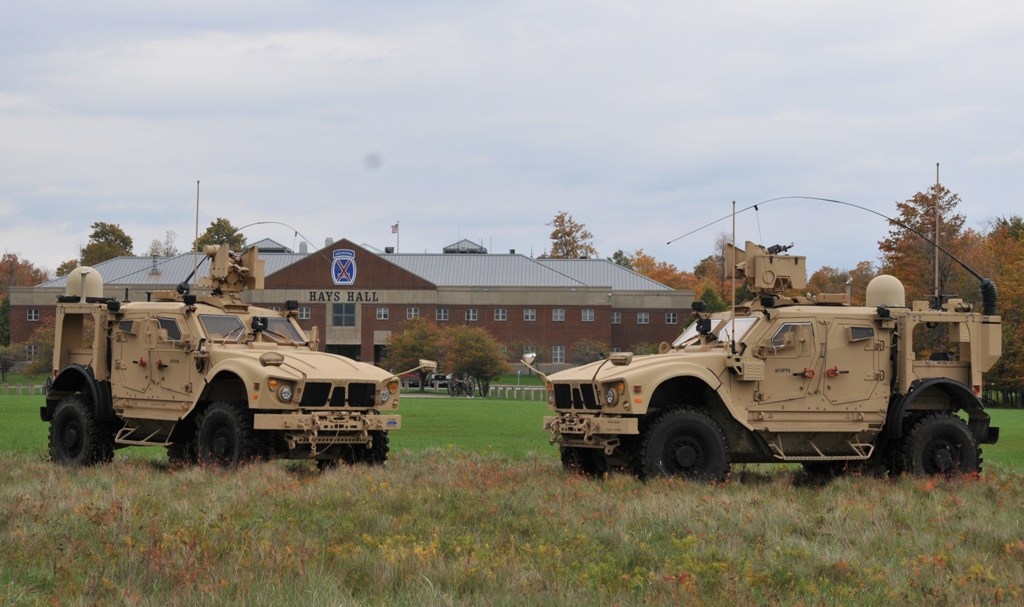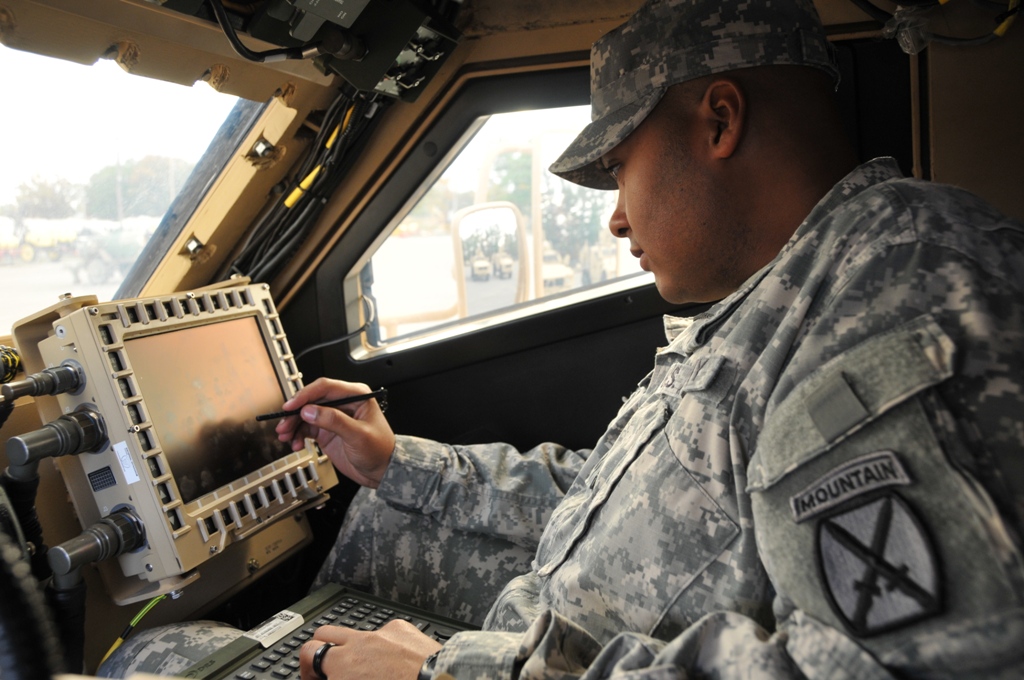
Claire Heininger, U.S. Army
FORT DRUM, N.Y. (October 15, 2012) — Soldiers will soon be able to cover greater distances, make quicker decisions and share more information using the Army’s new tactical communications network, according to leaders of the first unit to receive the equipment.
Through mobile communications technology that connects all echelons of a brigade combat team down to the dismounted Soldier, the Capability Set 13, or CS 13, network will reduce units’ reliance on fixed infrastructure, extend the range of communications and improve battlefield awareness at the lowest levels.
“This capability changes the equation, and gives us situational awareness where we need to have it and turn it against the enemy,” said Col. Walter E. Piatt, deputy commanding general for support of the 10th Mountain Division, whose 3rd and 4th Brigade Combat Teams, or BCTs, began training on the new gear Oct. 1. “These guys have been to Afghanistan — they know what this capability is going to have to do in combat.”
As U.S. forces continue to draw down in Afghanistan, they will turn over many of their Forward Operating Bases and other infrastructure to the local forces, thus gradually losing fixed network locations. Capability Set 13 systems provide mobile satellite and robust radio capability for commanders and Soldiers to take the network with them in vehicles and while dismounted as they conduct security assistance and some combat missions. Leaders said that ability would prove critical if or when the brigades are called on to deploy.
“As I look at upcoming missions, our ability and my ability to communicate with those Soldiers on the ground over extended distances — that’s really what will give us the edge as we go forward,” said Col. Sam Whitehurst, commander of the 3rd BCT, 10th Mountain Division, who along with Piatt described the technology as a significant upgrade from what he used during previous deployments over the last decade.

Through mobile communications technology that connects all echelons of a brigade combat team down to the dismounted Soldier, the Capability Set 13 network will reduce units’ reliance on fixed infrastructure, extend the range of communications and improve battlefield awareness at the lowest levels. (Photo Credit: Claire Heininger, U.S. Army)
Capability Set 13 not only introduces new technologies, but also a new approach to how the Army equips units with the network.
For the first time, the Army is delivering network systems not on an individual basis, but as an integrated communications package that spans the entire brigade combat team formation, connecting the static tactical operations center to the commander on-the-move to the dismounted Soldier. By using the Network Integration Evaluations, known as NIEs, to establish an integrated network baseline and to inform training, techniques and procedures, the Army can rapidly incorporate new technology and adapt it based on different mission requirements.
“We’re trying to make the systems we provide flexible enough to give commanders the ability to adjust,” said Brig. Gen. Daniel Hughes, Army director of System of Systems Integration, or SoSI. “The goal is to get the latest technology to these guys as fast as we can and make them as capable as possible.”
Before delivery to the 10th Mountain Division, the capability set was validated through the NIEs, a series of semi-annual events that leverage the 2nd Brigade, 1st Armored Division conducting rigorous mission scenarios in a realistic operational environment at Fort Bliss, Texas, and White Sands Missile Range, N.M. NIEs have not only allowed for Soldier-driven evaluations and assessments of network technologies, they have also aided the Army in development of Tactics, Techniques and Procedures for using Capability Set 13. Lessons learned from the NIEs have been applied as the Army works to field, train and sustain the Capability Set, and feedback from the 10th Mountain Division will also help the process evolve for future brigades.
Soldiers from the 10th Mountain Division’s 3rd BCT at Fort Drum, N.Y., and 4th BCT at Fort Polk, La., are now immersed in an intense cycle of new equipment training that runs through January. Classes on different systems have been synchronized with one another and with the units’ other pre-deployment requirements and exercises, which will begin next spring.
“This equipment that’s on the ground is the equipment that they would deploy with,” said Maj. Matt McGraw, SoSI trail boss for the 3rd BCT. “They’re getting hands-on experience.”
While it is still early in the fielding and training process, 10th Mountain Division leaders said they can see the network’s potential impact on the battlefield.
“We’re excited about this capability, because we’ve been there,” Piatt said. “We know what it needs to do.”
In celebration of the 25th anniversary of the Army Acquisition Corps (AAC), Access is publishing articles that highlight milestones throughout the history of the AAC. Each article marks a moment in acquisition excellence.
This article was published on Army.mil, October 15, 2012







